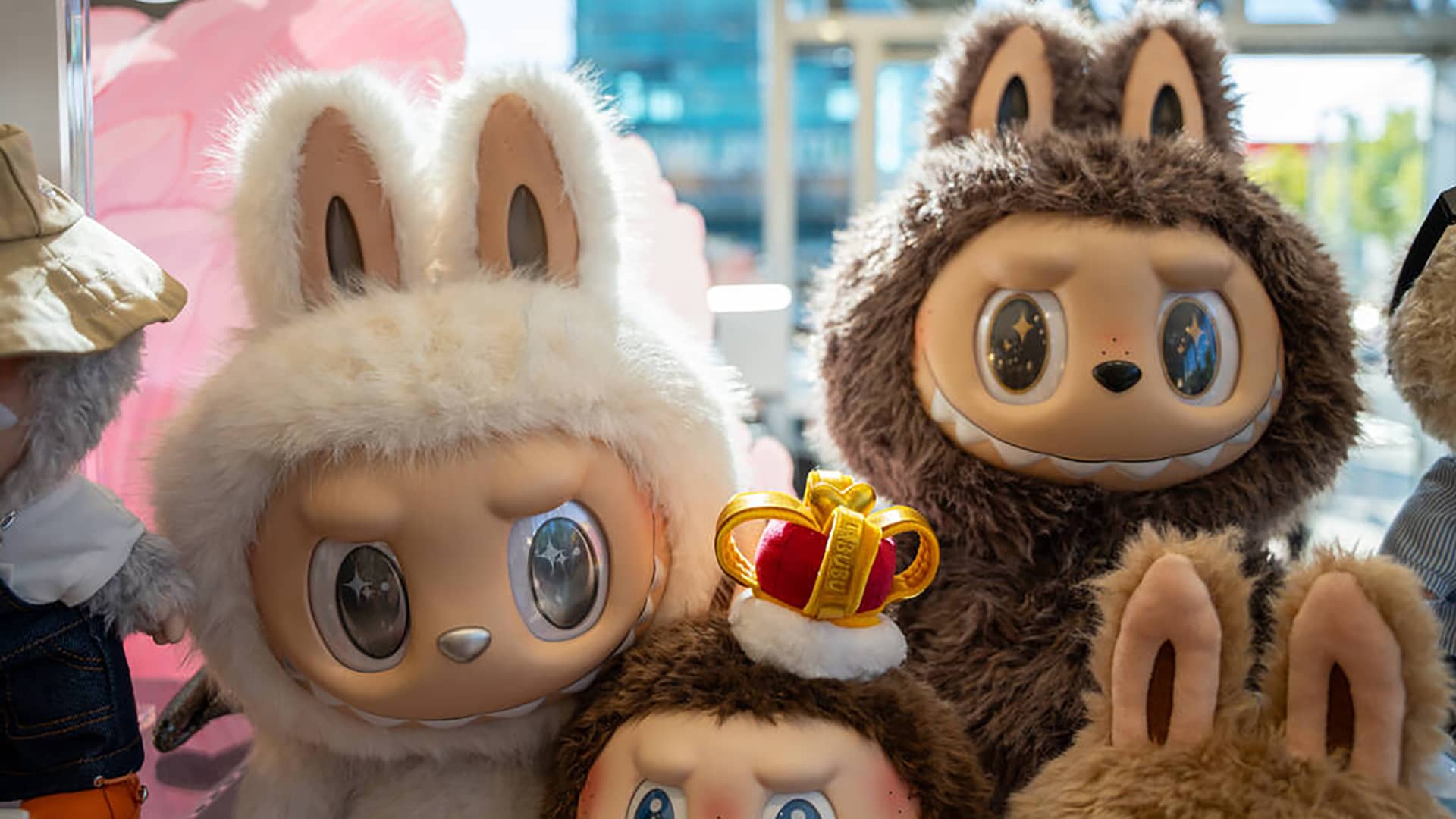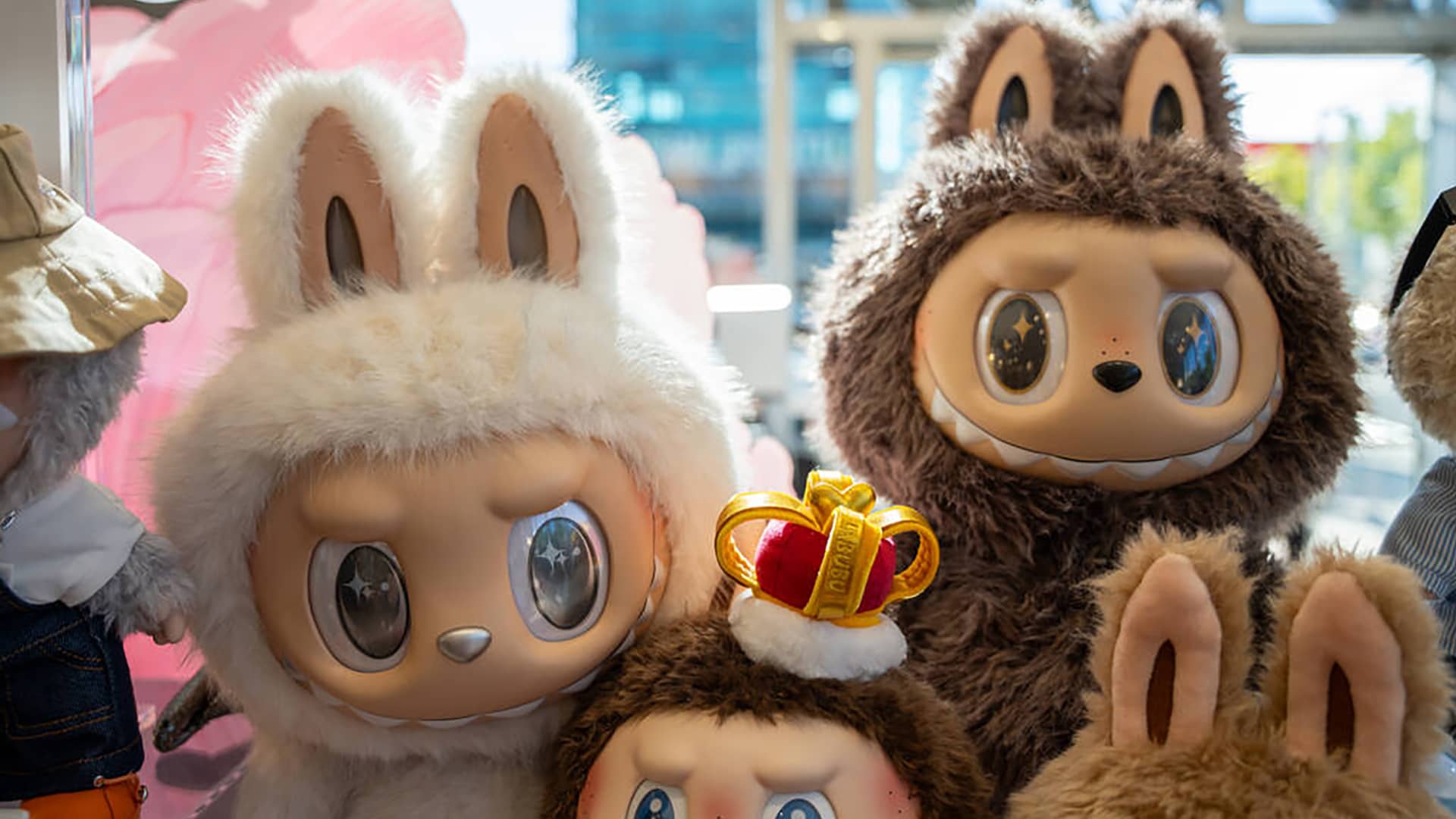The Labubu Effect: How a Creepy-Cute Plushie is Hooking America on Pop Mart
The Rise of the Labubu: A Cultural Phenomenon
The Labubu, a distinctive plush toy from Chinese toy company Pop Mart, has become a cultural sensation in the United States. Created by Hong Kong-based artist Kasing Lung, the Labubu’s unique design—elf-like features, wide eyes, and a mischievous grin revealing pointed teeth—straddles the line between cute and creepy. This unconventional aesthetic has captivated consumers, particularly in the US, where the Labubu has become a symbol of a broader trend in collectible toys.
The Labubu’s popularity has fueled massive growth for Pop Mart. Sales of plush toys, including Labubu products, have increased dramatically, skyrocketing over 1,200% between 2023 and 2024. This growth demonstrates the powerful influence of a single, well-marketed product on a company’s overall performance. The Labubu’s success is not merely a fleeting trend; it represents a strategic entry point into a potentially lucrative market.
The Allure of Blind Boxes: A Psychological Draw
Pop Mart’s business model revolves around “blind boxes,” sealed packages containing a random collectible figure from a specific series. This element of surprise and the thrill of the hunt have proven incredibly successful, fostering a passionate community of collectors. The Labubu often features within these blind box collections, increasing the desirability of each series.
The appeal of blind boxes taps into several psychological factors:
– The thrill of the unknown: The mystery of what’s inside each box creates excitement and anticipation.
– The desire for completion: Collectors are driven to acquire the entire set, leading to repeat purchases.
– The social aspect: Sharing and trading figures within the collecting community fosters a sense of belonging and camaraderie.
– Affordable indulgence: Blind boxes offer a relatively inexpensive way to indulge in collecting and self-expression.
Pop Mart has effectively capitalized on these factors, creating a highly addictive and engaging consumer experience. The Labubu serves as an accessible and visually appealing entry point into this world, drawing in new customers who might not otherwise be interested in collectible figures.
The “Gateway Drug” Effect: Labubu as a Catalyst
The term “gateway drug” is being used metaphorically to describe the Labubu’s role in introducing consumers to the broader Pop Mart ecosystem. Just as certain substances can lead to the use of more addictive drugs, the Labubu is enticing consumers to explore and become invested in other Pop Mart products.
Here’s how the “gateway drug” effect works in this context:
The Labubu acts as an ambassador for the Pop Mart brand, lowering the barrier to entry and introducing new customers to the world of collectible figures. This strategic role is crucial for Pop Mart’s expansion into the US market.
US Market Potential and Challenges
The US market presents both significant opportunities and potential challenges for Pop Mart.
Opportunities:
– Large consumer base: The US has a large and diverse population with a strong interest in toys, collectibles, and pop culture.
– Established retail infrastructure: The US has a well-developed retail infrastructure, making it easier for Pop Mart to distribute its products.
– Strong online presence: US consumers are highly active online, providing Pop Mart with opportunities to reach them through e-commerce and social media marketing.
– Growing interest in Asian culture: There is a growing interest in Asian culture and entertainment in the US, which can benefit Pop Mart.
Challenges:
– Competition: The US toy and collectibles market is highly competitive, with established players like Hasbro, Mattel, and Funko.
– Changing consumer tastes: Consumer tastes are constantly evolving, so Pop Mart needs to stay ahead of the curve and adapt its product offerings accordingly.
– Supply chain issues: Global supply chain disruptions can impact Pop Mart’s ability to meet demand and maintain competitive pricing.
– Intellectual property protection: Protecting its intellectual property from counterfeiters is crucial for Pop Mart’s long-term success in the US.
To succeed in the US market, Pop Mart needs to:
– Build brand awareness: Increase brand awareness through targeted marketing campaigns and collaborations with influencers.
– Expand retail presence: Establish a strong retail presence through partnerships with major retailers and the opening of its own stores.
– Develop exclusive products: Create exclusive products for the US market to differentiate itself from competitors.
– Engage with the community: Build a strong community of collectors through online forums, social media, and local events.
The Future of Pop Mart in the US: Beyond the Labubu
While the Labubu has played a vital role in Pop Mart’s initial success in the US, the company’s long-term growth will depend on its ability to diversify its product offerings and appeal to a wider range of consumers. Pop Mart should:
– Introduce new characters and series: Continuously introduce new and exciting characters and series to keep collectors engaged.
– Expand into different product categories: Explore opportunities to expand into other product categories, such as apparel, accessories, and home goods.
– Collaborate with artists and designers: Partner with talented artists and designers to create unique and innovative products.
– Focus on sustainability: Incorporate sustainable materials and practices into its manufacturing and packaging processes to appeal to environmentally conscious consumers.
– Enhance the customer experience: Continuously improve the customer experience through better customer service, faster shipping, and more engaging online content.
By focusing on innovation, community building, and sustainability, Pop Mart can build a strong and sustainable business in the US market, going far beyond the initial “gateway drug” appeal of the Labubu.
Conclusion: A Creepy-Cute Revolution
The Labubu has undoubtedly been a catalyst for Pop Mart’s success in the US, acting as a “gateway drug” to the company’s broader ecosystem of collectible figures. However, Pop Mart’s long-term success will depend on its ability to build a strong brand, diversify its product offerings, and engage with the US collecting community. While the Labubu’s mischievous grin may have initially captured the hearts (and wallets) of American consumers, Pop Mart’s continued innovation and strategic growth will determine whether this “creepy-cute” revolution can truly conquer the US market. The Labubu effect demonstrates the power of a single product to transform a company’s trajectory, but ultimately, sustained success requires a broader vision and a commitment to meeting the evolving needs of the consumer.












